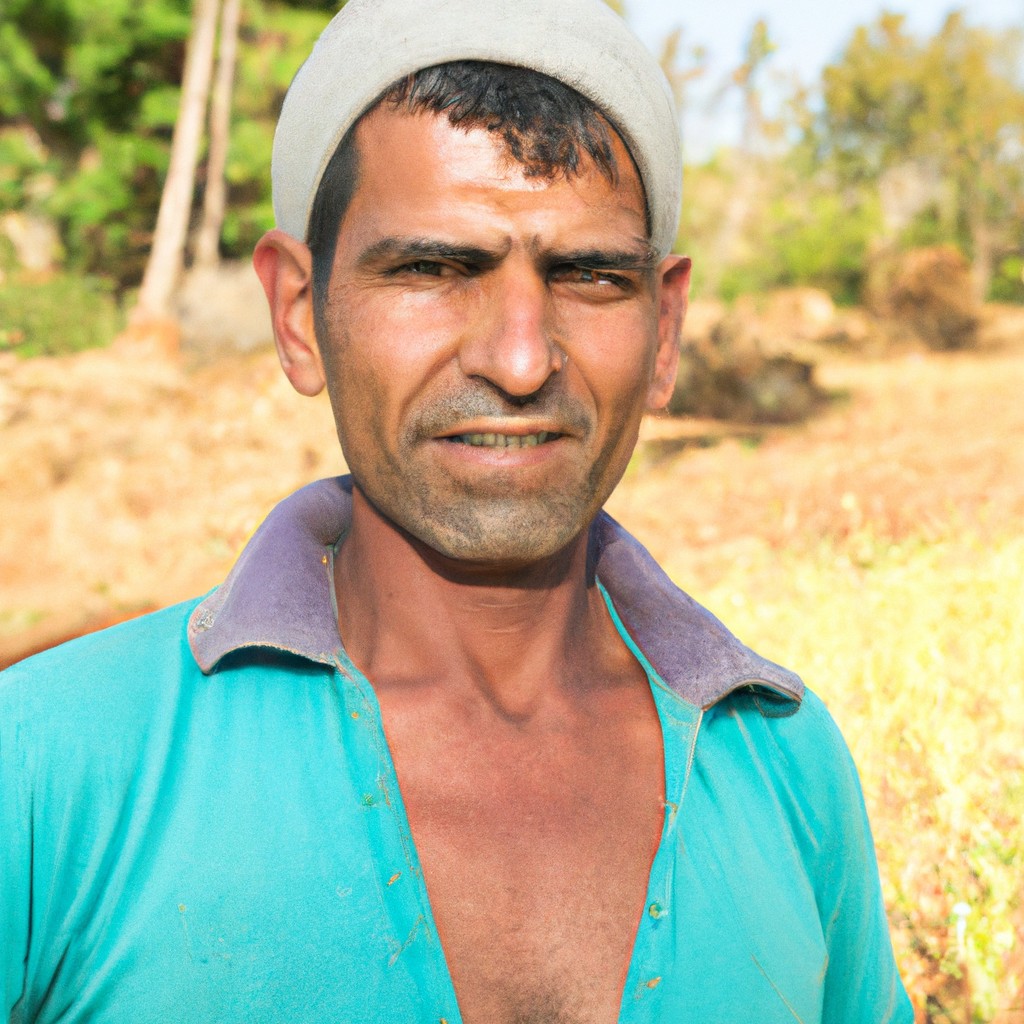Yes, regenerative farming has the potential to feed the world by revitalizing soil health, sequestering carbon, improving crop yields, and enhancing ecosystem diversity.
Regenerative farming, with its focus on soil health, ecosystem function, and rural livelihoods, holds the potential to feed the world sustainably. By revitalizing the land, this farming method can increase crop yields, enhance biodiversity, and mitigate climate change impacts.
The question isn’t whether regenerative farming can feed the world, but how we can facilitate its widespread adoption for a food-secure future. This article will delve into the principles of regenerative farming, the scientific evidence supporting its efficacy, and the steps needed to implement it globally.
So, if you’re looking for a comprehensive understanding of regenerative farming’s potential to feed the world, you’re in the right place.
Key takeaways:
- Regenerative farming can feed the world sustainably.
- Five principles of regenerative farming: reduce soil disturbance, keep soil covered, ensure crop diversity, maintain continuous living roots, and integrate livestock.
- Transition can be costly, but long-term benefits outweigh initial expenses.
- Small-to-medium farms practicing regenerative methods can be equally productive or more.
- Regenerative agriculture addresses climate change by sequestering carbon and improving ecosystem health.
Look Inside:
Understanding Regenerative Farming

Regenerative farming goes beyond merely being sustainable; it actively restores and enriches ecosystems. It centres around improving soil health and relies heavily on five main principles: reducing soil disturbance, keeping the soil covered, ensuring crop diversity, maintaining continuous living roots, and integrating livestock.
By minimizing ploughing and tilling, soil disturbance is reduced, aiding in the retention of essential microbes and nutrients. The soil cover, achieved through cover crops or organic residues, reduces erosion and evaporation, promoting water retention and improving the soil’s resilience to climatic shocks.
Crop diversity enhances soil fertility and curbs pest infestations, reducing dependency on chemical fertilizers and pesticides. Having continuous living roots throughout the year feeds soil organisms, aiding in carbon sequestration. Lastly, integrated livestock management helps in distributing nutrients evenly across the farmland, contributing to the soil’s fertility.
Together, these principles ensure the sustainability of ecosystems, make farming resilient to climate changes, and increase productivity over time.
How Does Regenerative Agriculture Work in Practice?
Regenerative agriculture, rooted in ecological principles, prioritizes enhancing and sustaining the health of the soil. Through a set of practices such as cover cropping, crop rotation, and limited tillage, it aims to increase soil organic matter that is crucial for nutrient cycling and water retention.
Livestock integration, when managed properly, helps to cycle nutrients and improve soil structure further by trampling and fertilizing.
Diverse cropping systems, another key element, underpin biodiversity, break pest cycles, and reduce disease risks. These practices together not just revive soil fertility but also make farms more resilient to pests, diseases, and varying climatic conditions.
Yet, it isn’t a one-size-fits-all approach. The specific practices and their implementation can vary based on localized ecological, climatic, and socio-economic conditions. The fundamental principle remains to work with, rather than against, nature to generate sustainable and resilient food systems.
The Economics of Regenerative Farming
Transitioning to regenerative practices can initially be costly as new techniques and methodologies must be adopted. Yet, over time, these costs often balance out due to improved soil health leading to better crop resilience and yield. Moreover, by diversifying their crop outputs, farmers adopting these methods can acquire additional income streams, offsetting initial transition expenses.
Decreased dependence on synthetic inputs also leads to considerable long-term savings. In the face of volatile input prices, regenerative farmers find more predictability in costs, aiding financial stability. Additionally, resilience to extreme weather—resulting from improved soil health—acts as a natural insurance mitigating crop failure and other climate change-related risks.
The scenario gets more optimistic with emerging government incentives, carbon credit programs, and premium market demands for regenerative agriculture products. These financial stimuli can make regenerative practice transitions more appealing for farmers, further accelerating the wider adoption of these sustainable farming practices.
Can Regenerative Agriculture Scale Up?
The scalability of regenerative agriculture is a critical concern when contemplating its ability to sustain the global populace. From a practical viewpoint, transitioning millions of farms to regenerative practices is a formidable but not unachievable task, given the right incentives and support structure.
Recent research indicates that small-to-medium sized farms practicing regenerative methods can be equally, if not more, productive than conventional farms, while also proving more resistant to adverse climate conditions. It is also essential to note that regenerative farming’s scalability is about more than just the total acreage under cultivation. It is about rebuilding rural livelihoods, fostering community resilience, and creating sustainable food systems.
Policy support, knowledge sharing, financial investment, and farmer training are crucial in facilitating this transition on a large scale. While there are complexities involved in this conversion, the long-term benefits – improved soil health, biodiversity conservation, climate resilience, and a reviving rural economy – certainly outweigh the challenges.
Challenges and Limitations of Regenerative Farming
While regenerative agriculture promises many advantages, implementing it on a global scale presents several challenges. One of the primary obstacles is the initial investment required for transitioning from conventional to regenerative methods. These upfront costs can deter farmers, particularly those in developing countries or those working on a small scale.
There is also a steep learning curve associated with these practices. Farmers must understand their local ecosystem, how to properly rotate crops, manage livestock, and more. This necessitates education and guidance, which can be inaccessible to many.
The lack of government policies, subsidies, or incentives geared towards encouraging the shift to regenerative agriculture also hinders its adoption. Finally, the absence of industry standards and clear definitions can lead to misinterpretation and inconsistent practices, diminishing the potential effectiveness of regenerative farming.
Case Studies: Successes in Regenerative Agriculture
Two farms highlight the potential of regenerative agriculture in vastly different landscapes: the Gabe Brown Farm in North Dakota and Symbiosis Ranch in Michigan.
In North Dakota, Gabe Brown faced financial hardships when traditional farming methods left his soil unhealthy and unproductive. By adopting the principles of regenerative agriculture – including crop diversity, no-till farming, and livestock integration – Brown was able to increase his soil organic matter from 2% to over 6%, resulting in higher yields and profitability.
Meanwhile, Symbiosis Ranch, a 7,000-acre farm with corn and cattle, rose above bankruptcy through regenerative techniques. Implementing rotational grazing improved the health of their pasture land, revitalising soil fertility, sequestering carbon, and creating a more resilient system against drought.
These examples illustrate that regenerative agriculture is not constrained by geography or resources but can bring tangible benefits irrespective of these factors, providing a powerful model for sustainable food production globally.
Regenerative Farming and Climate Change
Regenerative farming not only aims to produce sufficient food, but it also effectively addresses the pressing issue of climate change. Unlike conventional farming methods that contribute to environmental degradation, regenerative practices sequester more carbon in the soil. Healthy soil, enriched with organic matter, captures atmospheric carbon dioxide, a key factor in global warming.
Additionally, these practices promote biodiversity and health of ecosystems that further assists in carbon sequestration.
Moreover, the water retention capacity of healthy, carbon-rich soils helps crops withstand drought conditions, creating resilience against climate change-related weather events. By enhancing soil health and maintaining ecosystem balance, regenerative farming serves as a critical solution to mitigate the impacts of climate change.
Future Prospects: Feeding the World Sustainably
By implementing regenerative practices on a global scale, we can increase food production, reduce the environmental impact of agriculture, and improve the resilience of farming systems.
Comprehensive adoption of these practices could sequester a significant amount of carbon, potentially offsetting a substantial portion of current global emissions and reducing the overall impact of climate change.
At the same time, healthier soils with higher organic matter can hold more water, leading to more resilient farms that are better able to withstand storms and droughts.
As technological advancements and policy incentives align with the tenets of regenerative agriculture, it’s expected more farmers will transition to these practices. Government subsidies and market demand for sustainably grown products can both serve as key drivers in this transition.
Success, however, will depend on farmer education, policy support, research, and development of viable business models. Efforts are also needed for early detection and management of potential negative trade-offs, such as initial lower yields or increased labor requirements.
With strong commitment from all stakeholders, regenerative farming stands as a promising tool in our arsenal to ensure global food security in a sustainable and resilient manner.
FAQ
Can regenerative agriculture save the planet?
Yes, regenerative agriculture has the potential to significantly mitigate climate change by sequestering vast amounts of carbon dioxide globally and in the U.S.
How can regenerative farming help the environment?
Regenerative farming aids the environment by sequestering atmospheric carbon dioxide, reducing erosion and water pollution through practices like no-till farming and cover cropping, and thus producing healthier soils.
Is it possible to feed the world with organic farming?
Yes, it is entirely possible to feed the global population with organic farming, which promotes resource conservation and regeneration while simultaneously providing nutritious food.
What impact can regenerative farming have on biodiversity and soil health?
Regenerative farming can significantly enhance biodiversity and soil health by promoting ecological balance, enriching the soil with organic matter, and fostering the growth of diverse plant and animal species.
How does regenerative agriculture contribute to global carbon sequestration efforts?
Regenerative agriculture contributes to global carbon sequestration efforts by rebuilding soil organic matter and restoring degraded soil biodiversity, leading to both carbon drawdown and improving the soil’s water-holding capacity.
What are the economic implications for farmers transitioning to regenerative practices?
Transitioning to regenerative practices represents an initial investment for farmers, but can lead to higher long-term profits due to increased crop yields, improved soil health, and potentially reduced need for expensive chemical inputs.




